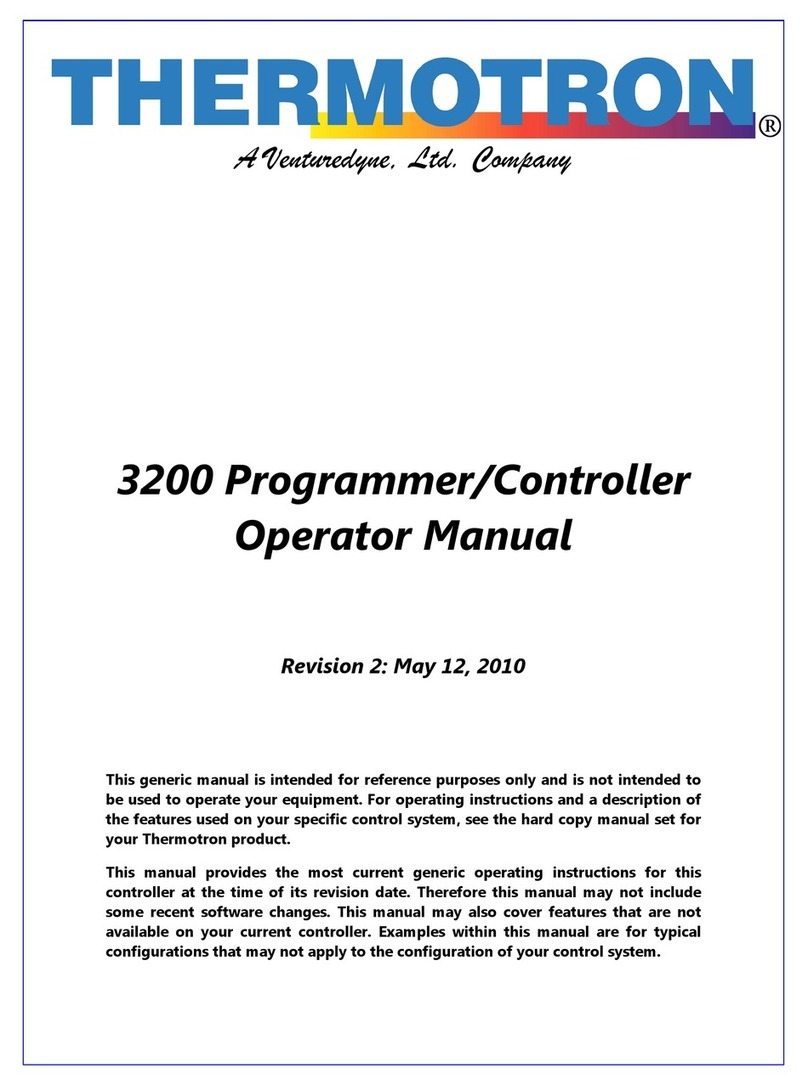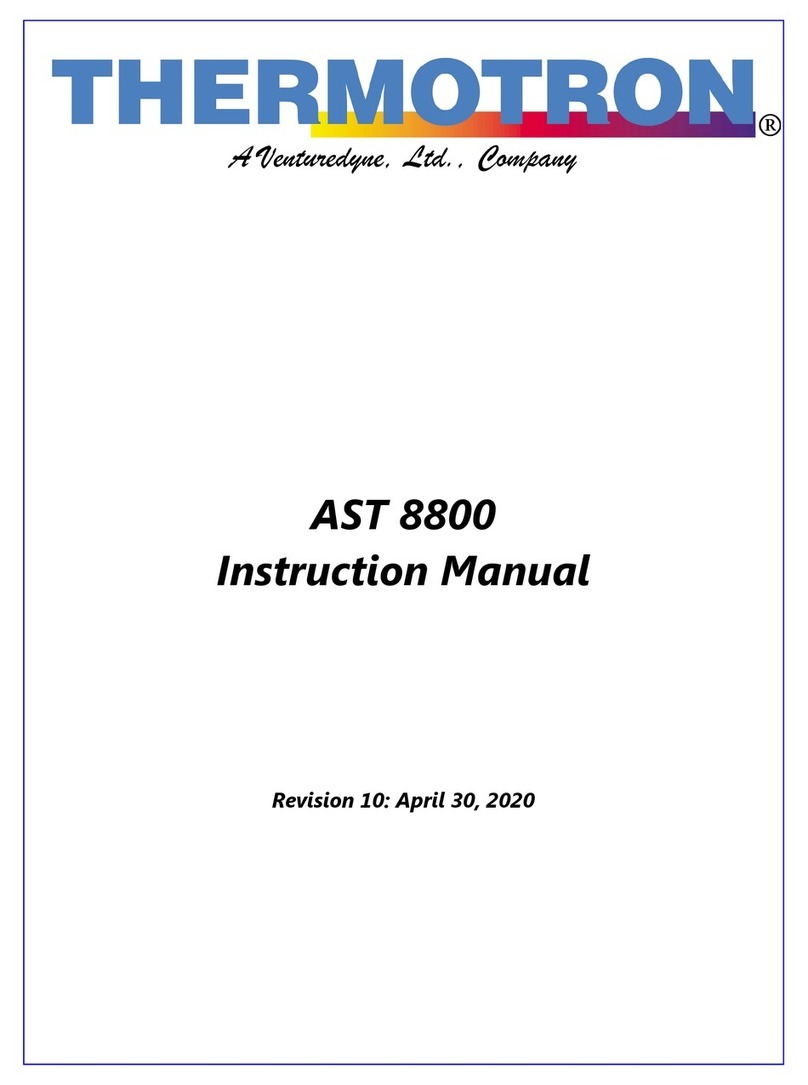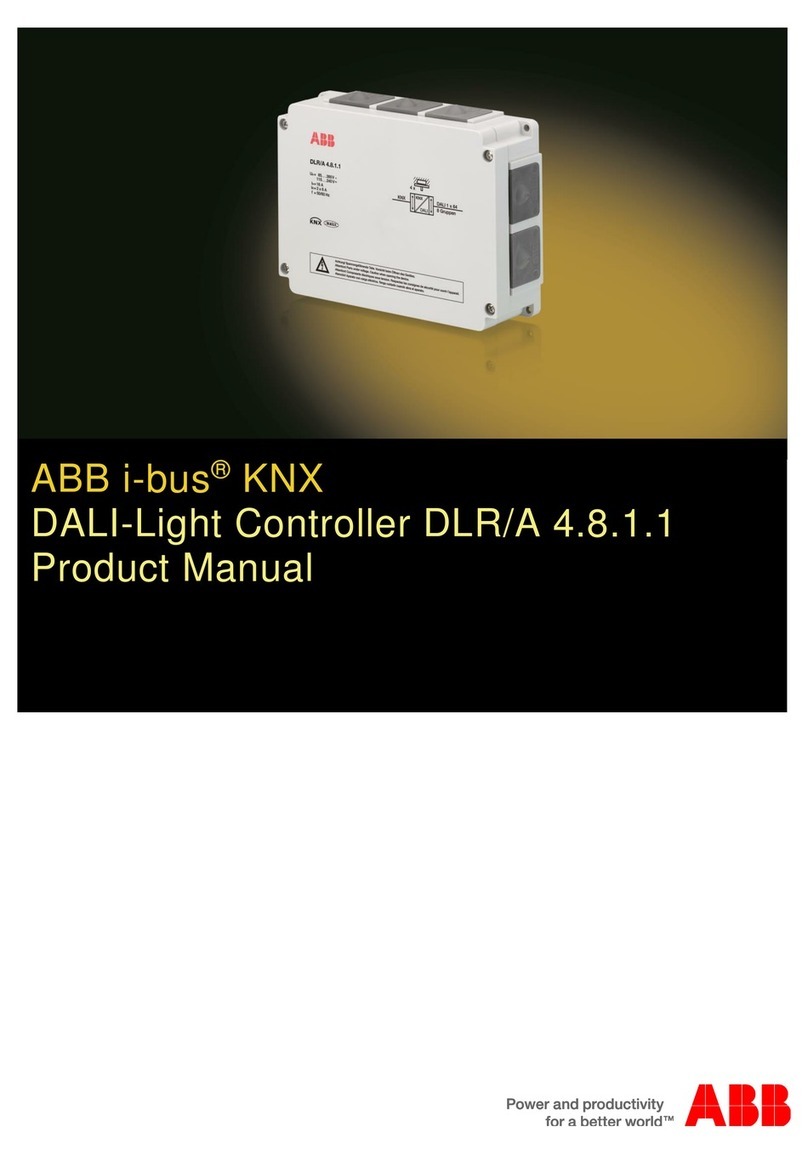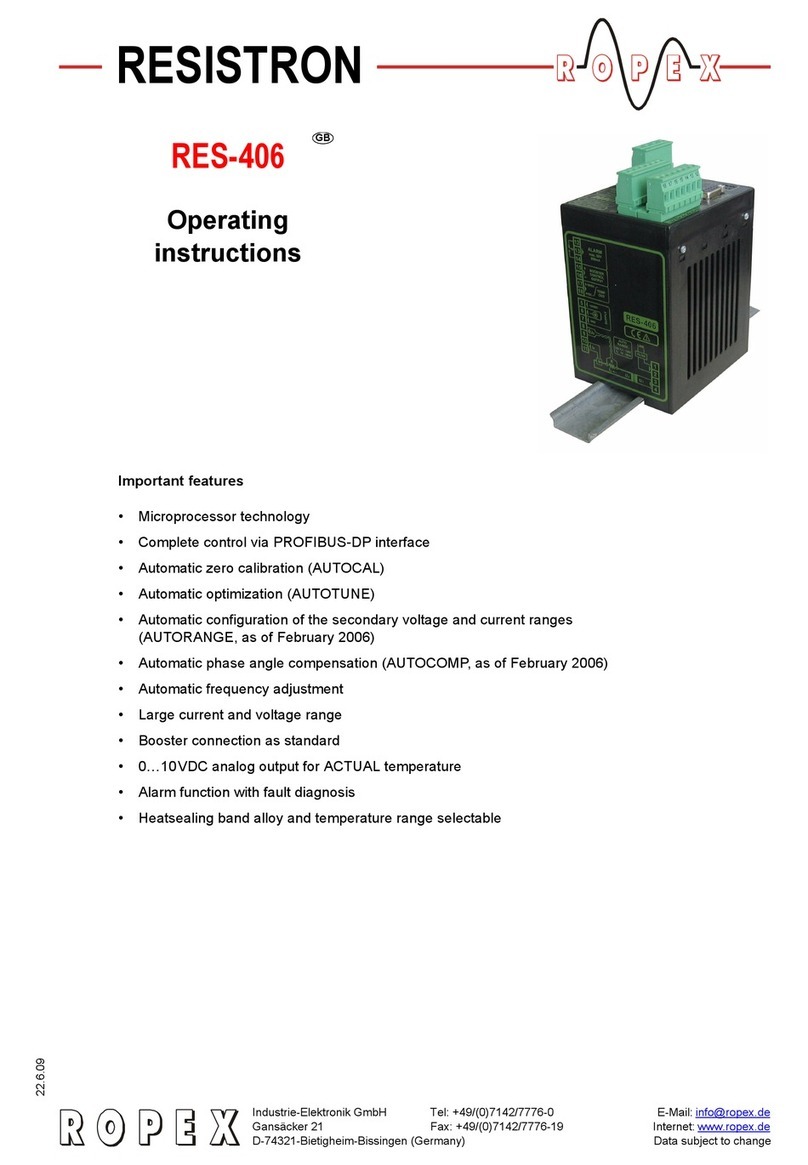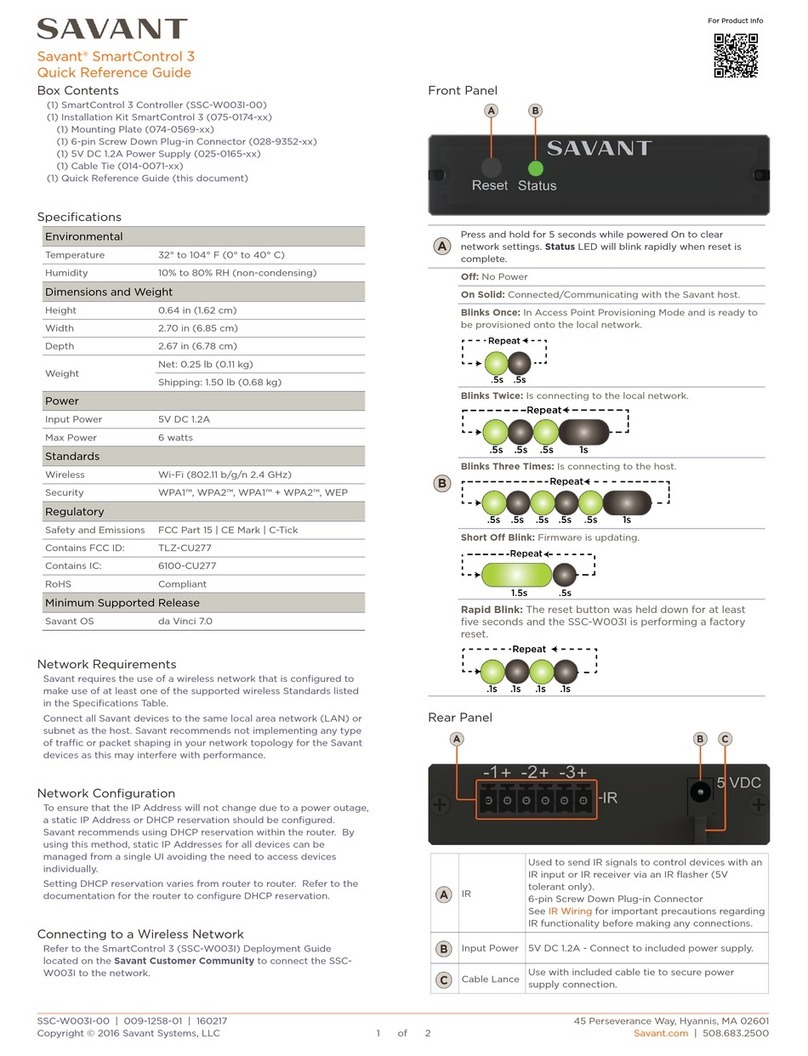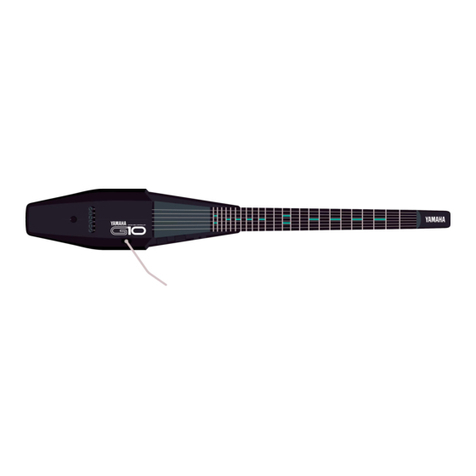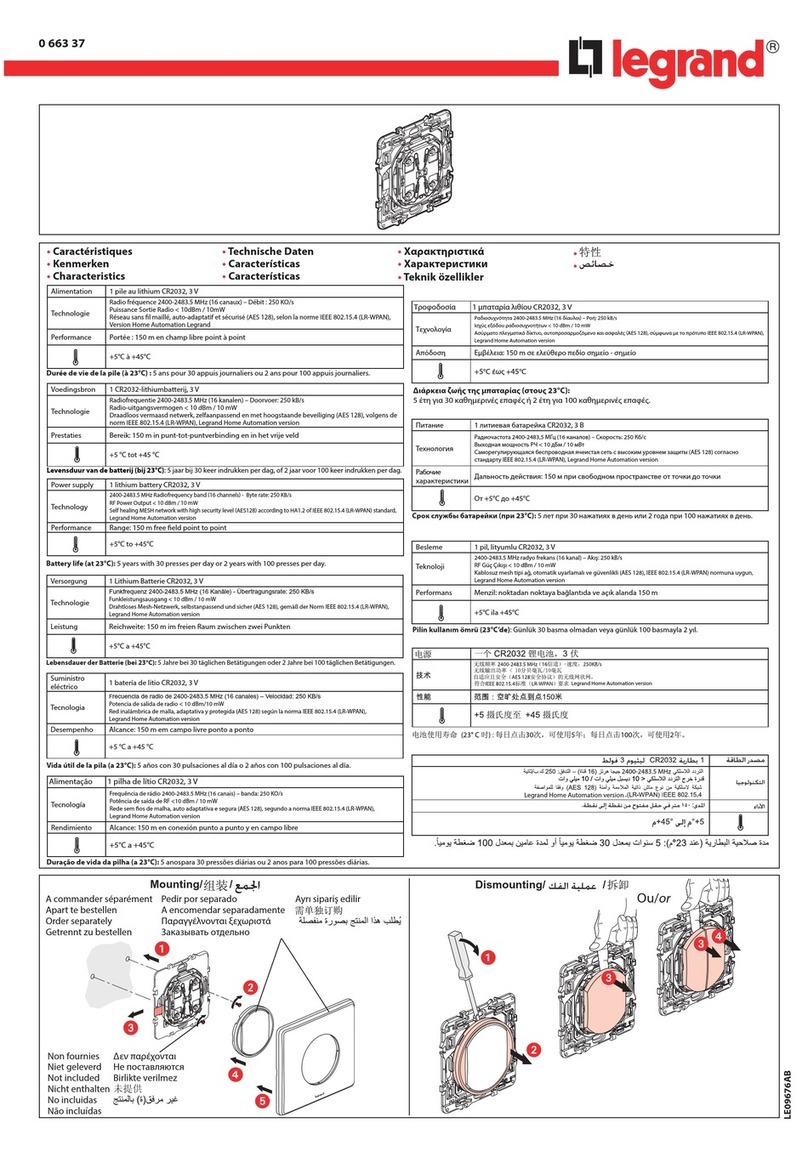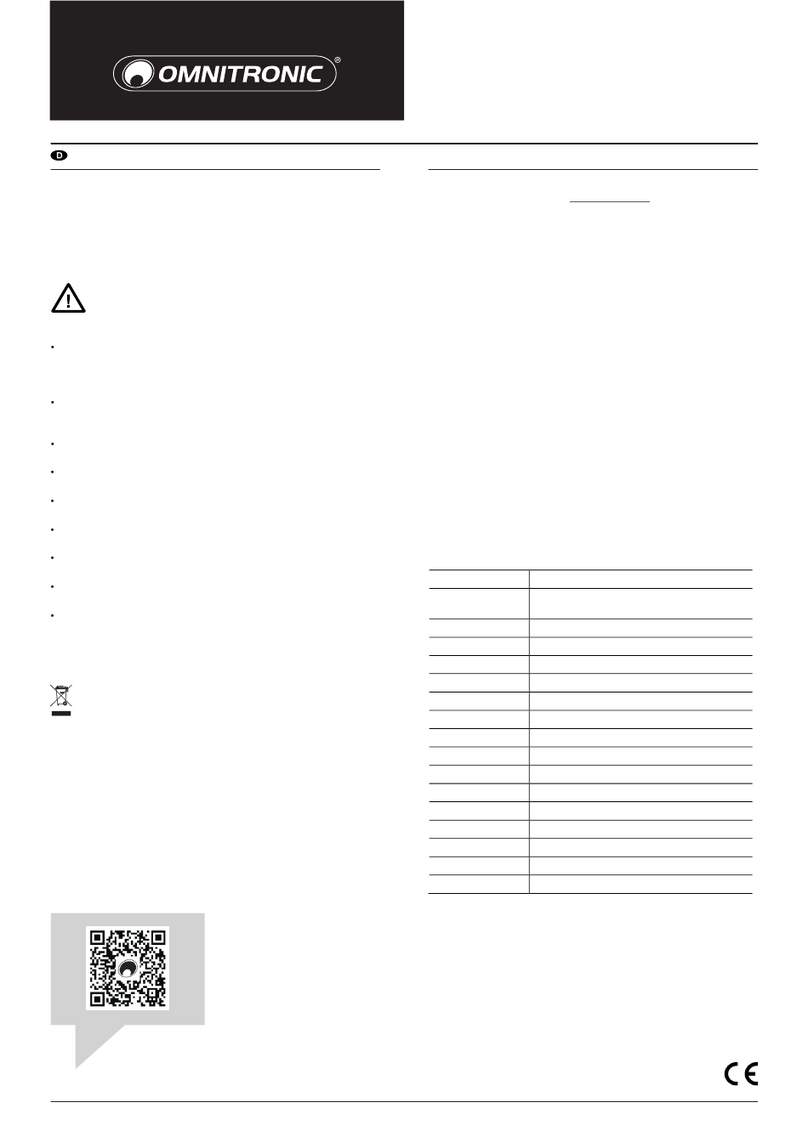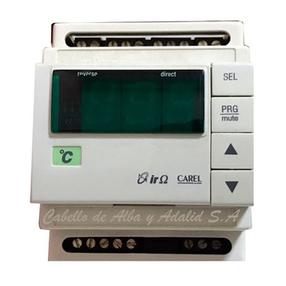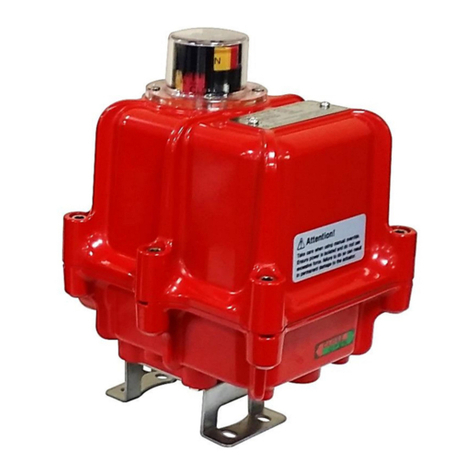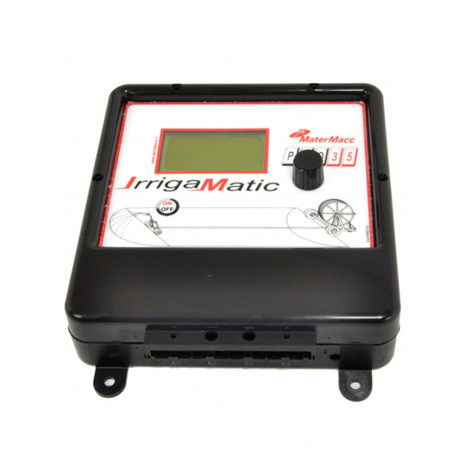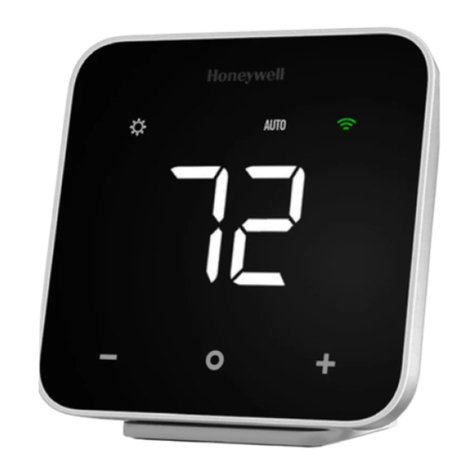Thermotron 3800 User manual

A Venturedyne, Ltd. Company
3800 Programmer/Controller
Operator Manual
Revision 3: April 16, 2009
This generic manual is intended for reference purposes only and is not intended to
be used to operate your equipment. For operating instructions and a description of
the features used on your specific control system, see the hard copy manual set for
your Thermotron product.
This manual provides the most current generic operating instructions for this
controller at the time of its revision date. Therefore this manual may not include
some recent software changes. This manual may also cover features that are not
available on your current controller. Examples within this manual are for typical
configurations that may not apply to the configuration of your control system.

This generic manual is not intended to be used to operate your equipment.
For additional manuals, contact Thermotron Industries:
Thermotron Industries
291 Kollen Park Drive
Holland, MI 49423, USA
Phone: (616) 392-6550
Fax: (616) 393-4549
www.thermotron.com
Therm-Alarm is a registered trademark of Thermotron Industries.
© Thermotron Industries
The information in this document is subject to change without notice. No part of this document
may be reproduced or transmitted in any form or by any means, electronic or mechanical, without
the express written permission of Thermotron Industries. Thermotron Industries may have
patents or pending patent applications, trademarks, copyrights, or other intellectual property
rights covering subject matter in this document. The furnishing of this document does not give
you license to these patents, trademarks, copyrights, or other intellectual property except as
expressly provided in any written license agreement from Thermotron Industries.
All relevant issues have been considered in the preparation of this document. Should you notice
an omission or any questionable item in this document, please feel free to contact the Thermotron
Product Support group between 8:00am and 4:30pm Eastern Standard Time at (616) 392-6550.
Regardless of the above statement(s), Thermotron Industries assumes no responsibility for any
errors that may appear in this document nor for results obtained by the user as a result of using
this product.
Revision 0: May 10, 2004
1: July 14, 2005 – Added Therm-Alarm Calibration information.
2: September 12, 2006 – Redundant Therm-Alarm Changes.
3: April 16, 2009 – Legal Statement

3800 Operator Manual Table of Contents
THERMOTRON This generic manual is not intended to be used to operate your equipment.
Table of Contents
Section 1: Getting Started
Introduction to the 3800.............................................................................................................................1-1
Display Module..........................................................................................................................................1-2
•Accessing Other Screens and Functions .............................................................................................1-2
•Context Sensitive Help System...........................................................................................................1-3
3800 Basic Functions.................................................................................................................................1-3
•Control Channels.................................................................................................................................1-3
•Chamber Conditioning System Signals...............................................................................................1-3
•Alarm Output Signals..........................................................................................................................1-3
•Auxiliary Outputs................................................................................................................................1-4
Running in Manual Mode..........................................................................................................................1-4
•Manual Mode ......................................................................................................................................1-4
•Manual Throttle Mode ........................................................................................................................1-5
Running a Program ...................................................................................................................................1-7
•Program Mode.....................................................................................................................................1-7
•Delayed Start.......................................................................................................................................1-8
•Edit From Hold....................................................................................................................................1-9
Chamber Status........................................................................................................................................1-10
Section 2: System Setup
Changing the Temperature Scale...............................................................................................................2-1
Changing the Screen Saver Activation Time.............................................................................................2-1
Enabling or Disabling the Key Beep .........................................................................................................2-1
Viewing the Software Version...................................................................................................................2-2
Adjusting the Auxiliary Cooling Settings..................................................................................................2-2
Adjusting Standard Control Parameters ....................................................................................................2-3
•Proportional Band Parameters.............................................................................................................2-3
•Integral Time Parameters ....................................................................................................................2-3
•Tuning Up the Proportional Band and Integral Time Parameters.......................................................2-3
Adjusting PTC Control Parameters ...........................................................................................................2-6
•Gain Parameters for PTC ....................................................................................................................2-6
•Integral Time Parameters for PTC ......................................................................................................2-7
•Offset Parameters for PTC..................................................................................................................2-7
•Tuning Up the PTC Gain, Integral Time, and Offset Parameters.......................................................2-7
Setting Process Alarms............................................................................................................................2-10
Changing the Access Level or Password.................................................................................................2-11
Viewing Computer Interface Settings......................................................................................................2-12
Configuring System Events .....................................................................................................................2-12
•System Event Parameters Defined ....................................................................................................2-12
•Setting Up System Events.................................................................................................................2-13
Viewing the Network Setup.....................................................................................................................2-14
Calibrating the Therm-Alarm Input.........................................................................................................2-15
Adjusting the Real Time Clock Settings .................................................................................................2-16
Viewing the Monitor Channel Readings .................................................................................................2-17
Service Status Functions..........................................................................................................................2-17
Viewing Diagnostic Screens....................................................................................................................2-19

Table of Contents 3800 Operator Manual
This generic manual is not intended to be used to operate your equipment. THERMOTRON
Section 3: Programming the 3800
Programmed Cycling .................................................................................................................................3-1
Creating a New Program............................................................................................................................3-3
Loading a Pre-Programmed Test ...............................................................................................................3-5
Editing a Program Name............................................................................................................................3-6
Viewing or Editing a Program...................................................................................................................3-7
Deleting a Program....................................................................................................................................3-8
Section 4: Therm-Alarm Functions
Introduction................................................................................................................................................4-1
Therm-Alarm Operating Modes ................................................................................................................4-2
Positioning the Input Thermocouple or Analog Sensor.............................................................................4-2
Viewing the Therm-Alarm Status..............................................................................................................4-3
Changing the Therm-Alarm Settings.........................................................................................................4-4
Alarm Mute and Reset Mode Functions....................................................................................................4-5
•Muting or Resetting the Therm-Alarm................................................................................................4-5
Initializing the Therm-Alarm Data ............................................................................................................4-5
Appendix A: Glossary

3800 Operator Manual Getting Started
THERMOTRON This generic manual is not intended to be used to operate your equipment. 1-1
Section 1: Getting Started
This section provides the basic information you need to start using the 3800. This includes an introduction to the
instrument, a brief hardware description, and instructions for operating in manual mode, running a program, and
checking the chamber status.
•For additional hardware information, see “3800 Basic Functions” later in this section.
•For more detailed hardware information, see the CMX and CM Control Module Manual.
•For information on 3800 setup, see Section 2 of this manual.
•For information on programming the 3800, see Section 3 of this manual.
•For definitions of many of the terms used in this manual, see Appendix A (Glossary) of this manual.
Introduction to the 3800
The 3800 is a microprocessor-based programmer and controller. The programmer function allows you to program
temperature, temperature/humidity, or other types of tests and store them in program memory. You can use these
programs to operate the controller functions of the 3800.
Most 3800 programmer/controllers are configured for either single-channel operation (temperature only), or dual-
channel operation (temperature and humidity). If your 3800 is configured for dual-channel operation, it can operate
as a temperature-only system or as a temperature/humidity system.
•Typically, channel 1 is dedicated to chamber air temperature using a dry bulb thermocouple. Channel 1 operates
the chamber’s heating and cooling systems.
•Typically, channel 2 is dedicated to humidity using either a solid-state humidity sensor or a wet bulb
thermocouple. Channel 2 operates the chamber’s humidifying and dehumidifying systems.
Although the 3800 can be configured for up to three programmable channels, for ease of use this manual is based on
the more common one- and two-channel configurations. Three-channel operation follows the same basic principles
described in this manual.
NOTE: The 3800 can display only two channels at a time: either channels 1 and 2 or channels 1 and 3. If your 3800
is configured for three channels, press the CH 2 and CH 3 keys to switch between displayed channel pairs.
The 3800 can be programmed and operated locally using the display screen, soft keys, and keypad. The 3800 also
can be programmed and operated from a host computer. For more information, refer to the 3800 Computer Interface
Manual.
The controller functions operate the chamber and its attached equipment. Analog and transistor-transistor logic
(TTL) level signals control and monitor the system. The chamber’s conditioning systems, printers, chart recorders,
and solid-state relay devices are operated from the controller signals. Other analog devices also can be monitored
and operated.
Thermocouples can be mounted throughout the operating systems to feed diagnostic information back to the
controller.
Before operating the 3800, several set-up procedures must be completed. Most of the set-up procedures were
performed at Thermotron; however, these procedures may need to be performed again if requirements change. Refer
to Section 2 for setup instructions.

Getting Started 3800 Operator Manual
1-2 This generic manual is not intended to be used to operate your equipment. THERMOTRON
Display Module
The 3800 is operated using the 4-line by 20-character display, soft keys, and keypad illustrated below:
Accessing Other Screens and Functions
NOTE: In this manual function keys and soft keys are indicated in bold letters. For example, “Press RUN, then
press START” means press the function key labeled RUN, and when the run program screen appears press
the word START on the last line of the 3800 display.
For most 3800 operations you start from the main screen (shown above) and use function keys and soft keys to
access other screens and functions. To return to the main screen from any other screen, press the ESC key repeatedly
until the main screen is displayed.
•To display the cause of the last chamber stop, press STOP. NOTE: Pressing STOP while a program is running
will stop the program.
•To turn the chamber light(s) on or off, press the LIGHT function key.
•If you try to access a function that is not
available at the current access level, this screen
will appear:
For more information on access levels, see
“Changing the Access Level or Password” in
Section 2 of this manual.

3800 Operator Manual Getting Started
THERMOTRON This generic manual is not intended to be used to operate your equipment. 1-3
Context Sensitive Help System
Press HELP to access the help system from any
3800 screen. A help message such as the one in this
illustration will appear:
Some help messages contain more than one pane.
Such help messages will have a MORE soft key.
Press MORE to see the next pane.
To exit the help system, press HELP a second
time.
3800 Basic Functions
The following sections provide brief descriptions of some of the 3800 functions.
Control Channels
Control channels receive inputs from thermocouples and/or other sensing devices used to monitor the environmental
conditions inside the chamber’s test space. The 3800 adjusts its control outputs based on those inputs.
•Typically, channel 1 uses a dry bulb thermocouple sensor mounted in the chamber airflow to sense air
temperature. The sensor inputs through the thermocouple input. Its outputs control the heating and cooling
systems.
•Typically, channel 2 uses either a solid-state humidity sensor or a wet bulb thermocouple to monitor chamber
humidity. The reading from the solid-state sensor or wet bulb thermocouple is used together with the reading
from the channel 1 dry bulb thermocouple to calculate chamber humidity. The channel 2 outputs control the
humidity system’s steam generator and dehumidify coil.
•Channel 3, if available, can sense temperature or linear inputs. These channels commonly are configured for
such options as Product Temperature Control or altitude.
•Channels 5 through 8 can be programmed at the factory as constant control channels. Each channel can be set at
the factory to sense either temperature or linear inputs.
Chamber Conditioning System Signals
The chamber conditioning signals are used by the controller to operate chamber systems such as heating, cooling,
and humidity. These signals are dedicated to the system and are internally programmed.
•The system, refrigeration, and humidity enable outputs allow their respective systems to turn on.
•The heat and cool outputs control their systems. For example, the channel 1 cool output normally operates the
solenoids that regulate the flow of refrigerant into the chamber’s evaporator coil.
•The auxiliary cool output operates any auxiliary cooling system, such as liquid nitrogen (LN
2
) or carbon dioxide
(CO
2
).
Alarm Output Signals
The alarm output transistor-transistor logic (TTL) signals indicate when the chamber temperature or humidity
exceeds the programmed limits. Two types of alarms are available for each channel:
•Deviation alarms are activated when the chamber temperature, humidity, or other process variable is outside the
channel’s deviation alarm band. A deviation alarm band restricts how far the process variable can be from set
point. For example, a deviation alarm band of 5°C activates the alarm output if the chamber temperature is more
than 5°C from set point.

Getting Started 3800 Operator Manual
1-4 This generic manual is not intended to be used to operate your equipment. THERMOTRON
Deviation alarms can be set for each manual mode test or program interval. For more information, see “Running
in Manual Mode” below, or Section 3 later in this manual.
•Process alarms are activated when the chamber temperature, humidity, or other process variable is outside the
process limits. The process alarm settings restrict the high and low limits of a test. A process alarm stops the
programmer/controller. For example, if the high process alarm limit is +125°C, the alarm is activated if the
temperature equals or exceeds +125°C.
Process alarms are a configuration setting that can be adjusted only in setup mode. For more information, see
Section 2 later in this manual.
Auxiliary Outputs
Auxiliary outputs provide programmable TTL level outputs. There can be up to two groups of eight auxiliary
outputs. These outputs are programmed on and off during each program interval or during manual mode operation.
These outputs normally are used to program systems on and off. For information on your chamber’s auxiliary
outputs, see your chamber manual.
Running in Manual Mode
Manual mode allows you to operate the 3800 controller functions. Manual mode operates the chamber using set
point and rate of change (ramp rate) settings. You can enter manual mode when the system is in stop mode. You also
can enter manual mode from hold program mode if, while running a program, you want to perform a special
operation in manual mode and then continue with the program.
Manual Mode
1. From the main screen press MN/PRG, then
press MANUAL. The manual mode screen
will appear:
2. Use the left and right arrow keys to cycle
through the values, such as set point (SP),
shown on the last line of the display.
3. To change a value, follow these steps:
a. Press the setting’s edit icon .
b. If the edit icon becomes a blinking cursor, use the numeric keypad to edit the selected value and press ENT.
c. If the edit icon becomes a down arrow , press CLR to toggle the setting on or off.
d. If you press MONITR the monitor
channels screen will appear. See “Viewing
the Monitor Channel Readings” in Section
2 of this manual.
e. If you press SERVCE the service status
screen will appear. See “Service Status
Functions” in Section 2 of this manual.
f. If you press T-ALRM the Therm-Alarm
status screen will appear. See Section 4 of
this manual.
g. If you press the edit icon for the CONTROL PARAMETERS setting, the control parameters screen will
appear. See “Adjusting Standard Control Parameters” or “Adjusting PTC Control Parameters” in Section 2
of this manual.

3800 Operator Manual Getting Started
THERMOTRON This generic manual is not intended to be used to operate your equipment. 1-5
4. The following list describes the manual mode values displayed:
•SP (set point): Enter the desired value for each active channel. When the ramp rate is not zero, the set point
will change toward this new value at the selected rate.
•AUX GRP1 and AUX GRP2 (auxiliary groups 1 and 2): Enter the numbers of the auxiliary relays you
want to activate. Auxiliaries are active only when the 3800 is running. For more information on auxiliary
relays, see “Auxiliary Outputs” earlier in this section.
•RUN TIME: The length of the manual mode test in hours, minutes, and seconds. This setting cannot be
edited.
•PTC (product temperature control): An optional heating and cooling process that controls the process
variable from the product temperature rather than the test space air temperature. NOTE: Product
temperature control is disabled if humidity is enabled.
•HUM (humidity): Enables the optional humidity system. NOTE: Humidity is disabled if product
temperature control (PTC) is enabled.
•CONTROL PARAMETERS: For more information on parameter groups, see “Adjusting Standard
Control Parameters” or “Adjusting PTC Control Parameters” in Section 2 of this manual.
•TH (throttle): Positive values indicate heating; negative values indicate cooling. The throttle setting is
editable only in manual throttle mode. See “Manual Throttle Mode” below.
•DV (deviation): Enter the value for how far you will allow the temperature or other process variable to be
from set point. The deviation setting will be monitored and the deviation alarm will be activated if the value
is exceeded. Enter a positive number only; the 3800 will monitor both positive and negative deviations.
•RR (ramp rate): Enter the desired number of degrees per minute. If you enter a setting other than zero, the
controller ramps to the new set point, changing the set point in a timed ramp. If you enter a zero, the
controller performs a step change. During a step change, the 3800 outputs a full demand (±100% throttle)
until it enters the set point’s proportional band.
5. To start running in manual mode using the settings entered above, press RUN.
6. To temporarily suspend a manual mode test, press HOLD. To resume the test, press RUN again.
7. To stop manual mode operation, press STOP.
Manual Throttle Mode
Manual throttle mode is provided to allow you to troubleshoot your chamber with the assistance of a Thermotron
Technical Liaison. For assistance please call the Thermotron Product Support group at (616) 392-6550 between 8:00
a.m. and 4:30 p.m. Eastern Standard Time. (NOTE: Manual throttle mode is available only at the Cal Lab access
level and above.)
To run a test in manual throttle mode, follow these steps:
1. Begin a manual mode test. If needed, see
“Manual Mode” above.
2. Use the left and right arrow keys to cycle
through the manual mode values until the
throttle (TH) setting appears.
3. Press the throttle setting’s edit icon .

Getting Started 3800 Operator Manual
1-6 This generic manual is not intended to be used to operate your equipment. THERMOTRON
4. You will be asked if you want to enter manual
throttle mode. Press YES.
5. A small mwill appear next to the throttle
setting to indicate manual throttle mode. To
adjust the manual throttle setting, press the edit
icon.
6. You will be asked if you want to edit the
manual throttle setting. Press EDIT.
7. Use the numeric keypad to edit the selected
value and press ENT.
8. To temporarily suspend a manual mode test, press HOLD. To resume the test, press RUN again.
9. To exit manual throttle mode, press the throttle (TH) edit icon, then press OFF.
10. To stop manual mode operation, press STOP.

3800 Operator Manual Getting Started
THERMOTRON This generic manual is not intended to be used to operate your equipment. 1-7
Running a Program
The programmer function operates the 3800 using programs. Each program consists of a group of intervals. In each
interval the controller cycles the chamber toward a final temperature and/or other process variable in a specified
amount of time. Once the interval is completed, the 3800 either transitions to the next interval or loops back to an
earlier interval.
Once a program is entered into memory it can be run immediately, or it can be set up for a delayed start. To create a
program, see Section 3 of this manual.
NOTE: The sample screens in this procedure show the display for a two-channel 3800 configuration. The 3800 can
display only two channels at a time: either channels 1 and 2 or channels 1 and 3. If your 3800 is configured
for three channels, press the CH 2 and CH 3 keys to switch between displayed channel pairs.
Program Mode
1. From any screen, press RUN. The run program
screen will appear:
2. Press CLR repeatedly until the desired
program is displayed. NOTE: To create a
program, see Section 3 of this manual.
3. By default the program you select will start
running with the first interval. To start with a
different interval, follow these steps:
a. Press the left or right arrow key to
highlight the Starting Int field.
b. Use the number pad to enter the number of the desired starting interval.
c. Press ENT.
4. Perform one of the following:
•To schedule a delayed start for the selected program, press DELAY and go to step 5.
•To start the program immediately, press START and go to step 7.
•To exit this screen without starting a program, press CANCEL or ESC. The 3800 will return to the
previous screen.
5. If you pressed DELAY, the delayed start
screen will appear:
6. To set up a delayed start, follow these steps:
a. Use the left or right arrow keys to
highlight a field.
b. Use the number pad to enter the desired
value.
c. Press ENT.
d. Press NEXT and repeat steps a through c.
e. To exit without saving any delayed start settings, press ESC.
f. To apply your delayed start settings, press SET.
g. Confirm your settings by pressing OK.To indicate a delayed start is pending, the main screen will now
begin with DLAY and the status screen will now begin with DS.

Getting Started 3800 Operator Manual
1-8 This generic manual is not intended to be used to operate your equipment. THERMOTRON
NOTE: You cannot run another program or enter manual mode while a delayed start is pending. To verify,
modify, or cancel a delayed start, see “Delayed Start” below.
7. When you press START, the 3800 will enter
run program mode and the chamber status
screen will appear:
For more information on the chamber status
screen, see “Chamber Status” later in this
section.
8. To suspend the interval at its current settings,
press HOLD. The 3800 will enter hold
program mode and the edit icon will appear:
NOTE: In hold program mode the 3800 will
maintain the chamber test space at the last set
point.
9. To enter temporary values into the current
interval, press the edit icon. For additional
information, go to step 4 of “Edit From Hold”
later in this section.
10. To resume running a suspended test, press RUN.
11. To stop a running test, press STOP.
Delayed Start
The delayed start function monitors the real time clock and starts a selected program at a pre-determined time. For
information on setting up a delayed start, see “Program Mode” above. To verify, modify, or cancel a delayed start,
perform one of the following:
•To verify a delayed start, press RUN. If the
setting is correct, press ESC. If the setting is
incorrect, perform the following procedure.
•To modify a delayed start:
a. Press RUN.
b. Press CHANGE.
c. Use the left or right arrow keys to
highlight a field.
d. Use the number pad to enter the desired value.
e. Press ENT.
f. Press NEXT and repeat steps c through e.
g. To exit without saving any changes, press ESC.
h. To apply your changes, press SET.
i. Confirm the new settings by pressing OK.
•To cancel a delayed start, press RUN, then press DELETE. The delayed start will be cancelled and the run
program screen will appear.

3800 Operator Manual Getting Started
THERMOTRON This generic manual is not intended to be used to operate your equipment. 1-9
Edit From Hold
Edit from hold allows you to place a running program in hold program mode and enter temporary values into the
current interval. Once the interval is run and completed, the temporary values are discarded. The next time the
interval is run, the original programmed values apply. NOTE: In hold program mode the 3800 will maintain the
chamber test space at the last set point.
To operate in edit from hold mode, follow these steps:
1. While a program is running, go to the main
screen and press the STATUS key. The
chamber status screen will appear.
2. Press the HOLD key. The edit icon will
appear.
3. Press the edit icon. The edit from hold screen
will appear:
4. Use the left and right arrow keys to cycle through the editable settings. For more detailed descriptions of the
settings, see Section 3 of this manual.
5. To change a value press EDIT. Use the numeric keypad to edit the selected value, then press ENT.
6. To switch channels press CH 1, CH 2, or CH 3 as appropriate.
7. When all the settings are acceptable, press ESC. The chamber status screen will reappear.
8. To resume running the current interval with the settings entered in step 5 above, press RUN.

Getting Started 3800 Operator Manual
1-10 This generic manual is not intended to be used to operate your equipment. THERMOTRON
Chamber Status
The chamber status screen allows you to view the current operating conditions of the chamber, such as set points,
process variables, and throttles.
NOTE: The sample screen shows the display for a
two-channel 3800 configuration. The 3800 can
display only two channels at a time — either
channels 1 and 2 or channels 1 and 3. If your 3800
is configured for three channels, press the CH 2
and CH 3 keys to switch between displayed
channel pairs.
1. From the main screen, press STATUS. The
status screen will appear:
2. Use the arrow keys to scroll through the following status display values (for more detailed descriptions of these
values, see Section 3 of this manual):
•TH: throttle •Prog: program name
•IV: initial value •Interval number
•FV: final value •Next Int: next interval
•Int Time: interval time •OPT: options enabled
•Time Left •MONITR | SERVCE | T-ALRM (see below)
3. Press MONITR to review the values of any current monitor channels. These channels are used for monitoring
processes within the chamber. If the low or high limit is exceeded for any channel, the 3800 alarm outputs will
be activated. For more information on monitor channels, see “Viewing the Monitor Channel Readings” in
Section 2 of this manual.
4. Press SERVCE to review the service messages. For additional information, see “Service Status Functions” in
Section 2 of this manual.
5. Press T-ALRM to review the Therm-Alarm status and settings. For additional information, see Section 4 of this
manual.
6. When the status screen is displayed while a program is running, the name of the program will be displayed if
you press the 9/PROG alphanumeric key.

3800 Operator Manual System Setup
THERMOTRON This generic manual is not intended to be used to operate your equipment. 2-1
Section 2: System Setup
This section provides instructions for viewing or adjusting the following functions:
•Temperature scale •Process alarms •Therm-Alarm calibration
•Screen saver activation •Access level and password •Real time clock
•Audible key beep •Computer interface setup •Monitor channels
•Software version •System events •Service status functions
•Auxiliary cooling system •Network settings •Diagnostics
•Control parameters
Changing the Temperature Scale
This setting changes the temperature scale for all
displayed variables.
1. From the main screen, press SETUP. This
setup mode screen will appear:
2. Press the CLR key to toggle between Celsius
and Fahrenheit.
Changing the Screen Saver Activation Time
1. From the main screen, press SETUP, then
press MORE. The second setup mode screen
will appear:
2. Use the numeric keypad to enter the number of
minutes before the screen saver is activated.
3. Press ENT.
Enabling or Disabling the Key Beep
1. From the main screen, press SETUP, then
press MORE. The second setup mode screen
will appear.
2. Use the arrow keys to move to the key beep
field. A down arrow will appear next to the
key beep setting.
3. Press the CLR key to toggle on or off an
audible key beep each time a key is pressed.

System Setup 3800 Operator Manual
2-2 This generic manual is not intended to be used to operate your equipment. THERMOTRON
Viewing the Software Version
1. From the main screen, press SETUP, then
MORE, then MORE. The third setup screen
will appear:
2. From this screen you can see the software
version.
Adjusting the Auxiliary Cooling Settings
Some chambers are equipped with optional liquid nitrogen (LN
2
) or carbon dioxide (CO
2
) auxiliary cooling systems.
When the refrigeration system is operating at full cooling throttle, the auxiliary cooling system can be operated for a
programmed percentage (duty cycle) of a selected time frame.
For example, if you set the auxiliary cooling time frame to five seconds and the duty cycle to 30%, the auxiliary
cooling system comes on for 1.5 seconds (30% of five seconds) and then goes off for the remaining 3.5 seconds of
the five-second interval. If you set the duty cycle to 100, the auxiliary cooling system comes on and stays on for as
long as the refrigeration system is operating at full cooling throttle.
1. From the main screen, press SETUP, then
MORE, then MORE, then MORE. The
fourth setup screen will appear:
2. Use the left or right arrow key to select a field.
3. Use the numeric keypad to edit the selected
value, then press ENT.

3800 Operator Manual System Setup
THERMOTRON This generic manual is not intended to be used to operate your equipment. 2-3
Adjusting Standard Control Parameters
CAUTION: The 3800 programmer/controller was factory-tuned and should not need to be re-tuned unless the
product requirements change enough to affect the performance of the chamber. Incorrect values
could damage your equipment and/or product.
NOTE: Tuning the 3800 control parameters is a time-consuming procedure that will take a minimum of
two to three hours to complete.
Control parameters adjust the performance of the chamber around the set point. As the chamber nears the set point,
the 3800 adjusts the chamber throttles to provide a smooth ramp to the set point. To prevent overshooting and
oscillation around the final set point, the refrigeration, heating, and other systems must be damped as they approach
the set point. To maximize chamber performance, you must also compensate for lag times.
The control parameters are tuned in manual mode. The same procedure is used to tune up each channel. The
adjustments are made to the proportional band and integral time parameters.
Proportional Band Parameters
The proportional band parameters are a coarse adjustment (1 to 9,999 units) to the control algorithm. These
parameters set the proportional bandwidth around the set point for the control channel’s process variable. As the
process variable nears the set point, it enters the proportional band. Once inside the proportional band, the throttle is
backed off in proportion to the difference between the set point and the current process variable. NOTE: The
proportional bands use the same units of measurement as the process variable.
•Smaller proportional bands can result in faster transitions.
•If the proportional band is too large it can result in very slow transition times — the chamber may never reach
set point.
•If the proportional band is too small it can result in overshoot or oscillation around the set point.
•As a rule for the proportional band, smaller = faster response, larger = slower response. Generally, you should
adjust the proportional band to the smallest value possible without the process variable excessively overshooting
or oscillating around the set point.
Integral Time Parameters
The integral time parameter is a fine adjustment to the control algorithm. The integral time parameter is used when
the process variable nears the set point and the throttle is backing off. The integral time parameter adjusts the throttle
to take the droop out of the proportional band setting and allows the chamber to reach the set point.
Droop is an effect, such as natural heat loss through the test space walls, that prevents the process variable from
reaching the final set point. The integral time parameter determines how quickly the throttle will be adjusted to
compensate for droop. Without an integral time entered, the process variable will not reach or remain at the set point.
NOTE: The integral time parameter is programmable from 0 (integral off) to 1,000 seconds.
•Longer integral times result in longer times to reach the set point.
•Shorter integral times result in shorter times to reach the set point.
•If the integral time is too short, the process variable will oscillate indefinitely when it reaches the set point.
•As a rule for the integral time, shorter = faster response, longer = slower response. Generally, shorter integral
times mean shorter transition times.
Tuning Up the Proportional Band and Integral Time Parameters
The proportional band and integral time parameters must be “tuned up” to produce an efficient, controlled
environmental test cycle. First you tune up the proportion band for quality control near set point, then you tune up
the integral time to achieve accuracy.

System Setup 3800 Operator Manual
2-4 This generic manual is not intended to be used to operate your equipment. THERMOTRON
For the optimal combination of performance and quality, each control channel is tuned to be critically damped. This
occurs when the process variable overshoots the set point slightly and then oscillates around the set point slightly
until it stabilizes at the set point. This level of control becomes available only with properly tuned proportional band
and integral time parameters.
When tuning up chamber parameters with two or more control channels, tune up one channel at a time, always tuning
the proportional band parameters first. Additionally, each control channel’s reference channel should be tuned up
first. For example, for humidity operations, tune up the temperature channel first because it is the reference channel
for the humidity channel. The control stability of the temperature channel directly affects the control stability of the
humidity channel. NOTE: For most chambers channel 1 is temperature and channel 2 is humidity.
Example Starting Parameters
Heat proportional band 20 Heat integral time 60
Cool proportional band 40 Cool integral time 90
Record the original parameter settings
1. From the main screen, press MN/PRG, then press MANUAL. The manual mode screen will appear.
2. Use the left and right arrow keys to cycle through the values shown on the last line of the display until
CONTROL PARAMETERS appears.
3. Press the edit icon at the end of the word
PARAMETERS. The first control parameters
screen will appear:
4. If needed, select the parameters screen for the
channel you are tuning by pressing CH1,
CH2, or CH3.
5. Write down the heat and cool proportional
band (PBand) settings.
6. Press NEXT.
7. Write down the heat and cool integral time (Integ ) settings.
Obtain a performance baseline
8. Press ESC until the manual mode screen
appears.
9. Use the arrow and alphanumeric keys to select
and edit the settings for the channel you are
tuning:
a. Set the deviation (DV) to 0.
b. Enter a new set point (SP) based on which
parameters you are tuning, such as a
heating set point for tuning the heating
parameters.
NOTE: When tuning parameters, the heating parameters are usually tuned before the cooling parameters.
Normally you should select the set point based on the tests you are running.
c. Set the ramp rate (RR) to 0.
d. Disable all unnecessary auxiliaries.
e. Make sure product temperature control (PTC) is disabled. NOTE: If you are tuning the temperature
channel in a temperature-humidity system, disable humidity (HUM) for best results.

3800 Operator Manual System Setup
THERMOTRON This generic manual is not intended to be used to operate your equipment. 2-5
10. Press RUN. The chamber will enter run manual mode.
11. Watch the process variable (PV) for the channel you are tuning as it approaches set point and then stabilizes for
10 to 15 minutes.
12. If the current parameter settings are correct, the process variable will overshoot the set point slightly and then
oscillate around the set point slightly until it stabilizes at the set point.
•If the process variable oscillates near the set point, the proportional band is too small.
•If the process variable takes too long to reach the set point, the proportional band is too large.
•If the process variable undershoots the set point slightly until it finally reaches the set point (if it ever does),
the integral time is too large.
•If the process variable overshoots the set point, the integral time is too small.
Adjust the setting
13. To adjust the proportional band:
a. Change the set point (SP) to back the process variable away from the set point you will use to tune the
parameter.
b. Press the CONTROL PARAMETERS edit icon.
c. Change the heating or cooling proportional band (PBand) for the channel you are tuning.
14. Repeat steps 8 through 11 to see the effect of the new proportional band setting. The ideal proportional band
setting is obtained when the process variable stabilizes near set point (for example, within ±2°C or ±2% RH). As
it stabilizes, it oscillates in decreasing amounts until it droops just above or below the set point. NOTE: The
integral time function will adjust the set point up or down to compensate for this droop.
•If the process variable continues oscillating, you will need to increase the proportional band setting just
until the oscillation stops.
•If the process variable is not oscillating, you will need to decrease the proportional band setting just until
oscillation begins, then increase the setting until the oscillation stops.
15. If necessary, you can tune the current channel’s integral time parameter once you have tuned the channel’s
proportional band parameter.
a. Change the set point to back the process variable away from the set point you will use to tune the parameter.
b. Press the CONTROL PARAMETERS edit icon.
c. Change the heating or cooling integral time (Integ) for the channel you are tuning.
16. To see the effect of the integral time setting, repeat steps 8 through 11. The ideal integral time setting is obtained
when the process variable equals the set point.
•If the process variable oscillates around the set point, you should increase the integral time.
•If the process variable takes too long to achieve the set point, you should decrease the integral time.
Repeat as needed
17. Once the first set of parameters (such as the heating parameters) have been tuned up, the other set of parameters
can be tuned up.
18. Once the parameters for the first channel have been tuned up, the next channel’s parameters can be tuned up.
19. Once you have finished tuning up all the channels, record the parameter settings on the duplicate master sheets
located with the Configuration Data Sheets. Keep these values on record with the 3800 manual.

System Setup 3800 Operator Manual
2-6 This generic manual is not intended to be used to operate your equipment. THERMOTRON
Summary
When adjusting the control parameters you should follow this general outline:
1. Run a heat-up test to see how the chamber controls. If necessary adjust the heat parameters.
2. Run a cool-down test to see how the chamber controls. If necessary adjust the cool parameters.
3. Run a heat-up test to see the effect of the changes from step 1. If necessary adjust the heat parameters again.
4. Run a cool-down test to see the effect of the change from step 2. If necessary adjust the cool parameters again.
5. Continue to run alternating heat-up and cool-down tests, adjusting the heat and cool parameters as needed to
achieve the desired level of control.
Adjusting PTC Control Parameters
CAUTION: The 3800 programmer/controller was factory-tuned and should not need to be re-tuned unless the
product requirements change enough to affect the performance of the chamber. Incorrect values
could damage your equipment and/or product.
NOTE: Tuning the 3800 control parameters is a time-consuming procedure that will take a minimum of
two to three hours to complete.
Control parameters adjust the performance of the chamber around the set point. As the chamber nears the set point,
the 3800 adjusts the throttles to provide a smooth ramp to the set point. To prevent overshooting and oscillation
around the final set point, the refrigeration, heating, and other systems must be damped as they approach the set
point. To maximize chamber performance, you must also compensate for lag times.
The product temperature control (PTC) control parameters are tuned in manual mode. The adjustments are made to
the gain, integral time, and offset parameters.
Gain Parameters for PTC
The gain parameter is a coarse adjustment to the PTC control algorithm. The larger the gain, the longer the 3800
will wait to start slowing down the throttle as the load temperature approaches the load set point.
maximum offset
gain = proportional band
For example, if the maximum offset is 10°C and the desired proportional band is 5°C, the gain would be set to
10°C/5°C = 2.
The temperature channel will still perform using the air parameters, but the offset parameters control the set point of
the temperature channel in relation to the PTC channel’s set point. When a PTC program is run, the temperature
channel immediately cycles beyond the set point by the maximum offset. With the chamber air at maximum offset,
the product cycles toward the final set point at its maximum rate. The temperature channel remains at the maximum
offset above the PTC channel’s set point until the product temperature enters the proportional band near final set
point. The throttle of the temperature channel is reduced in relation to the PTC channel until the final set point is
reached.
The gain parameter is related to the time constant of the load. The greater the time constant of the load, the more
gain is required to change the temperature of the load. Increase the gain parameter for a faster load response.
Additionally, a higher gain causes the load to proportion into the set point when the temperature is closer to the final
set point.
As a rule for the gain setting, smaller = slower response, larger = faster response. Generally, you will want the
largest gain setting possible without the process variable excessively overshooting the set point.
Table of contents
Other Thermotron Controllers manuals
Popular Controllers manuals by other brands
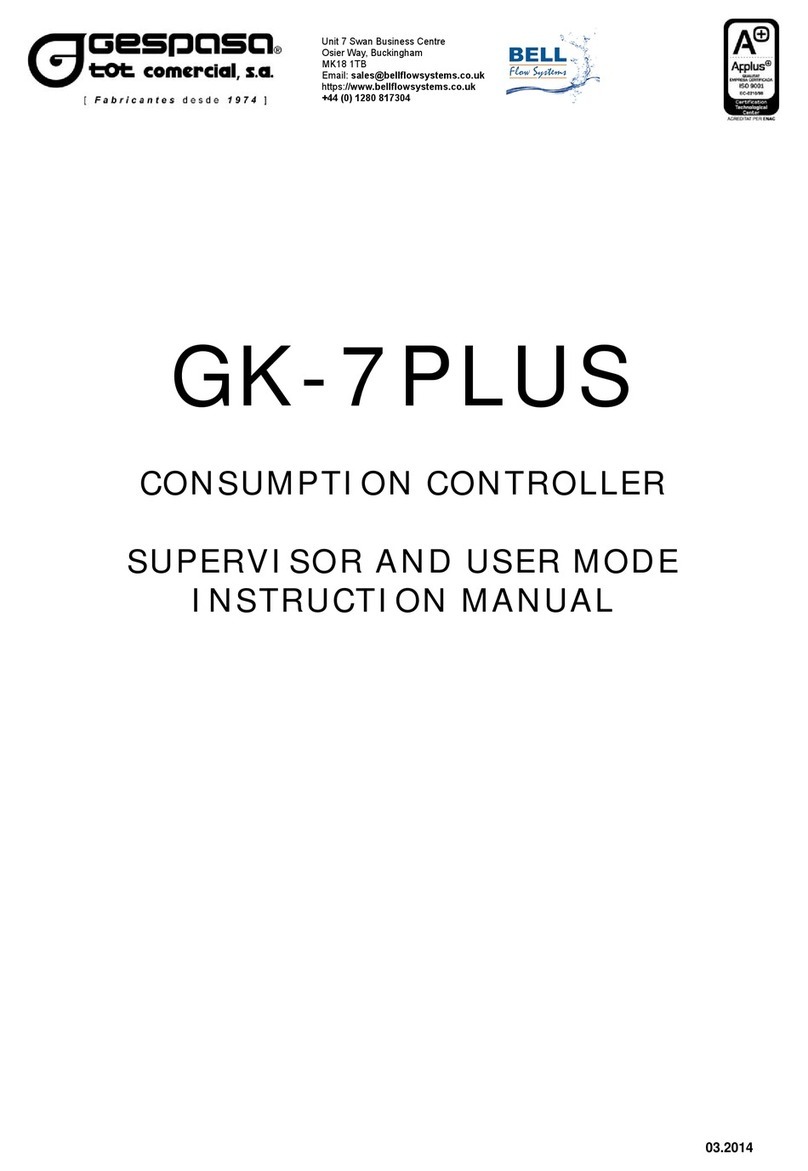
Gespasa
Gespasa GK-7PLUS instruction manual

VALPES
VALPES VT1000 Installation and operation manual
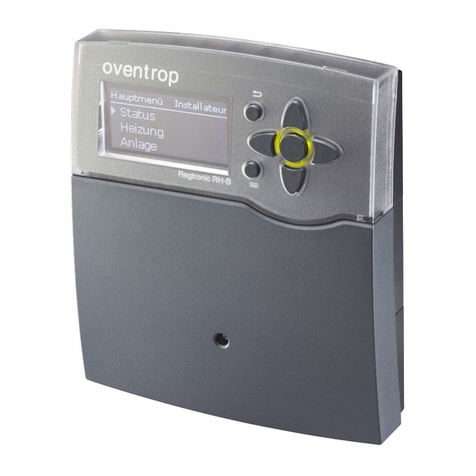
oventrop
oventrop Regtronic RH HT Installation and operating instructions for the specialised installer
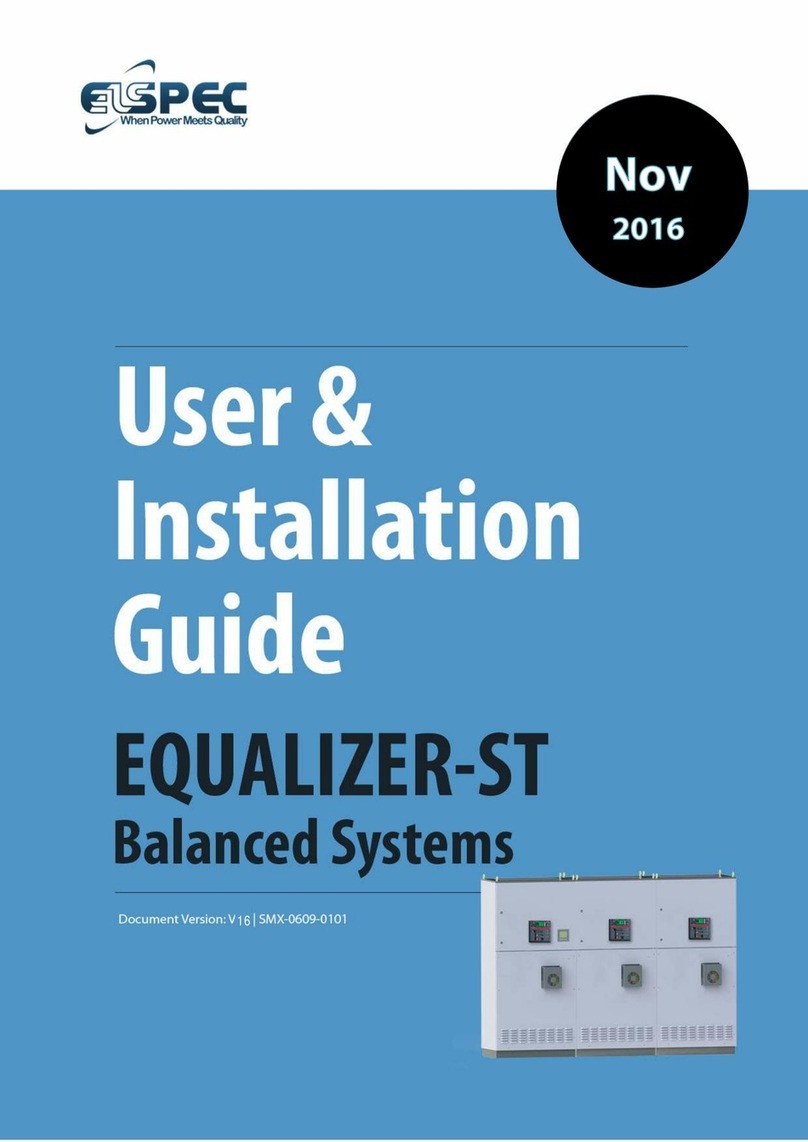
Elspec
Elspec EQUALIZER-ST User and installation guide
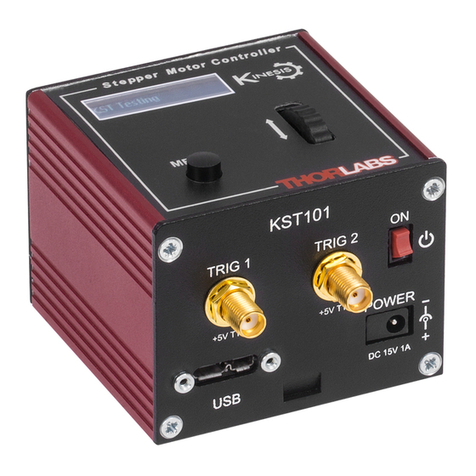
THORLABS
THORLABS KST101 user guide
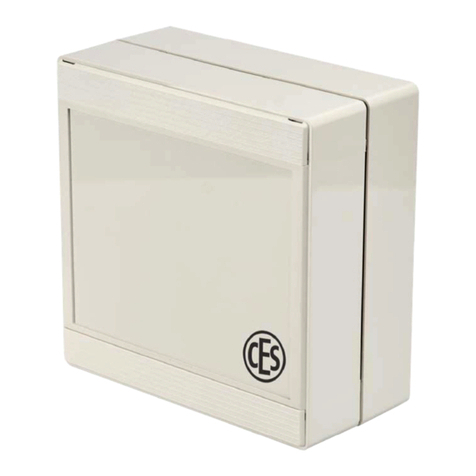
CEStronics
CEStronics AccessOne TSG1/SDC Assembly and operating manual
